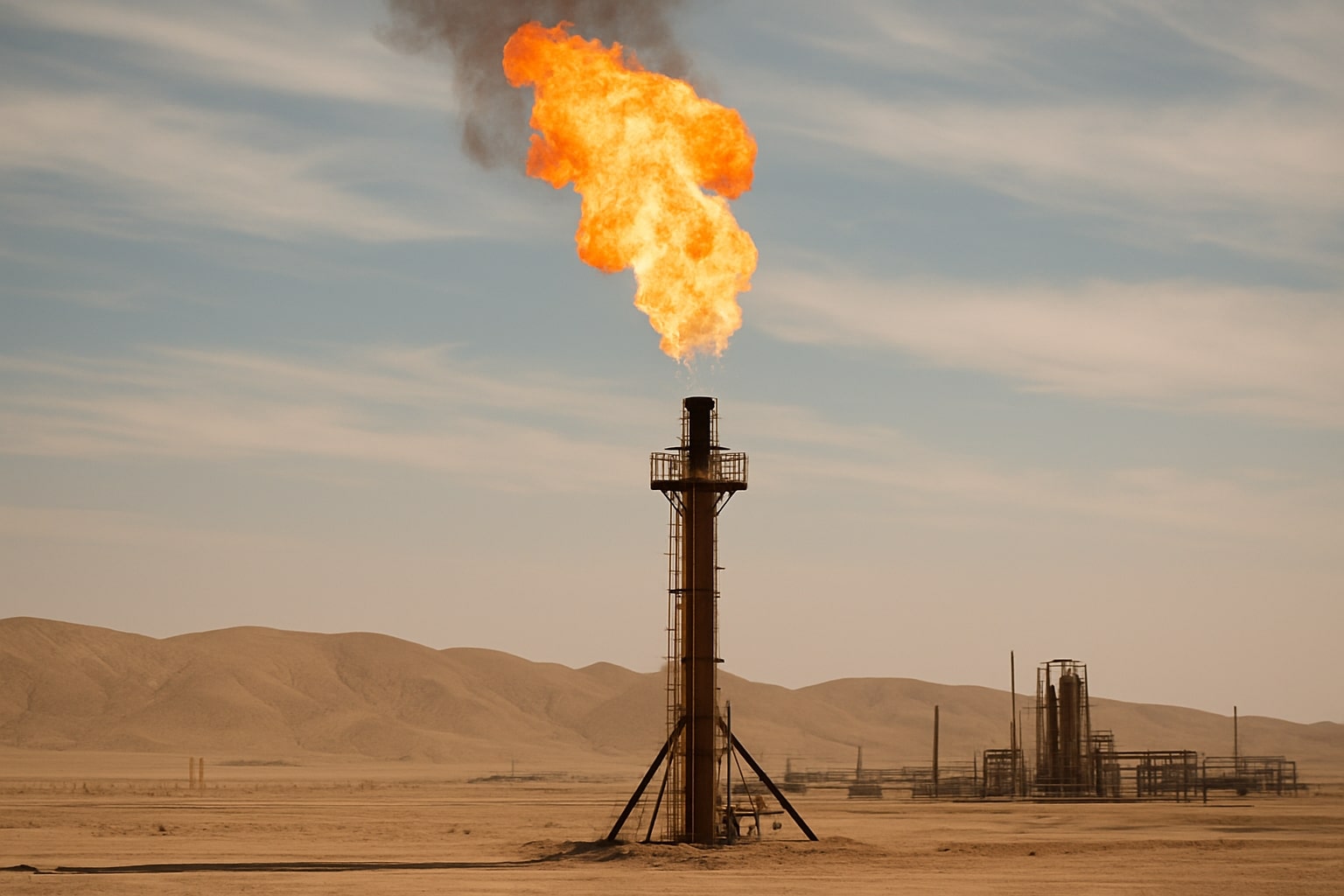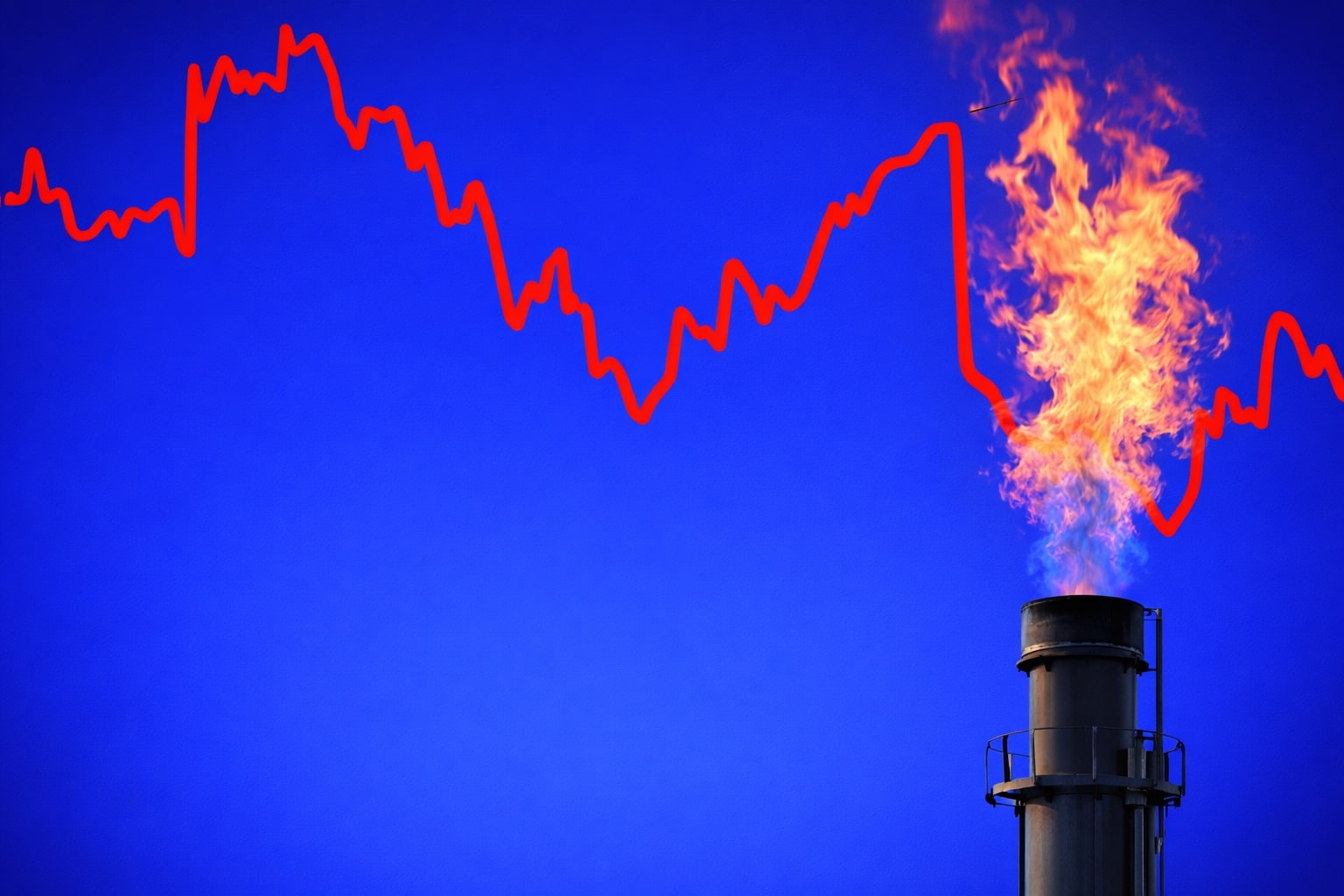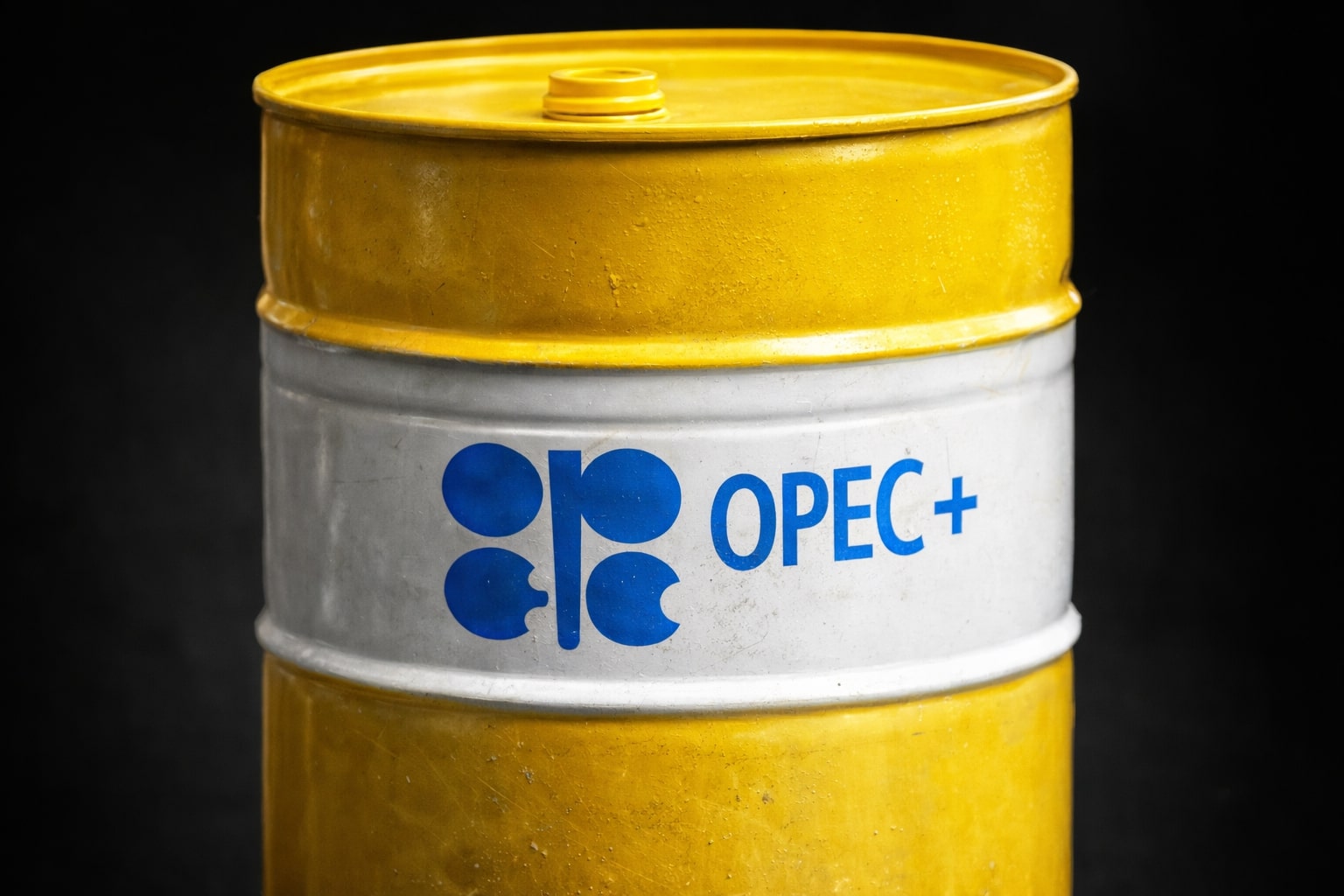
Natural Gas Faces Supply Shock and Summer Headwinds as Price Battles $3
FSRU Delays, Egypt’s Gas Hikes, and Solar Growth Reshape NG=F Market in 2025 | That's TradingNEWS
Natural Gas Price Faces Structural Headwinds Despite Short-Term Heat Boost
Natural Gas (NG=F) is battling against a shifting global energy landscape that continues to suppress demand despite localized weather-driven spikes. As of July 4, front-month August futures fell to $3.42, down 2.26% for the session, following a larger-than-expected +55 bcf injection reported by the EIA—outpacing forecasts of +49 bcf but still under the 5-year average of +61 bcf. U.S. inventories now sit 6.2% above their seasonal average but 5.8% below year-over-year levels.
The overall picture remains structurally weak: lower-48 gas demand has slipped 5.4% y/y, now sitting at 74 bcf/day, while production remains robust at 107.4 bcf/day, up 3.3% y/y. LNG export flows are stable at 15.0 bcf/day, but weak domestic industrial and power generation demand continues to pressure spot pricing.
Egypt's LNG Strain Highlights Global Supply Fragility
A severe imbalance is unfolding in Egypt’s natural gas market as domestic production declines sharply, forcing increased reliance on costly LNG imports. Currently, Egypt imports 1 bcf/day from Israel—returning to pre-Iran war levels—but disruptions have persisted since October 2023, impacting fertilizer and petrochemical production.
The Egyptian government has announced a $1/MMBtu price hike for industrial users in sectors such as iron and nitrogen fertilizers. While intended to manage import costs and maintain export competitiveness, this move risks undermining industrial output amid already reduced capacity utilization. With LNG imports expected to add 2.25 bcf/day once two new floating storage and regasification units (FSRUs) are fully operational, delays continue to plague launch timelines.
Energos Eskimo’s deployment at Ain Sokhna has been delayed to mid-July due to terminal infrastructure issues, while Energos Power remains docked in Alexandria for climate adaptations. The country now relies solely on Hoegh Galleon, brought online mid-2024, with Egypt paying daily penalties for undelivered LNG cargoes awaiting regasification.
U.S. Summer Demand Softens as Solar Cannibalizes Gas-Fired Generation
Despite a heatwave in parts of the U.S., solar energy’s 29% year-on-year surge in June led to a measurable decline in natural gas use for power generation. Daily solar production rose by 220 GWh/day, while overall electricity demand increased less than 1%. As a result, the U.S. power sector cut natural gas usage, compounded by coal’s relative price advantage following a 35% year-over-year increase in Henry Hub prices, now around $3.30/MMBtu.
Short-term weather models do offer upside. Vaisala forecasts warmer-than-average temperatures across the Midwest and East through July 17, supporting short-term rallies. But analysts warn that any aggressive move upward is likely to be sold into.
Türkiye Spot Market Activity Rises as Imports Continue
Türkiye’s spot natural gas market recorded a 12.6% volume increase, reaching 6.23 million liras on July 3. Pipeline flows totaled 126.41 million cubic meters, while the price for 1,000 cubic meters hit 14,234 liras (~$357), reflecting global LNG tightness and heat-driven regional demand. The growing activity underscores competition for available LNG cargoes amid global regasification bottlenecks.
Storage Outlook and Rig Count Confirm Longer-Term Surplus
Despite summer-driven drawdowns, structural supply pressure remains evident. U.S. storage sits comfortably above 5-year norms, and gas rig counts, though slightly down to 108 rigs, remain near the 15-month high of 114 posted in June.
Europe’s gas storage lags historical trends at 59% full, compared to a 5-year average of 68% for early July. However, increased LNG contracting from U.S. exporters and additional European terminal capacity are expected to stabilize the market by Q4.
Valuation View: Natural Gas at $3.42 Faces Resistance With Bearish Bias Toward $3.00
From a technical standpoint, Natural Gas (NG=F) continues to exhibit sideways to bearish tendencies. Despite recent bounces off the 200-day EMA, the failure to break higher amid thin holiday volume reflects weak conviction. A break below $3.34 opens the door for a retest of the critical $3.00 psychological level, which aligns with longer-term support and demand zones.
Seasonal patterns, combined with pressure from alternative energy and low industrial activity, suggest downside remains favored. Edison Electric Institute data shows electricity output is up 3.2% y/y, but much of that load is now handled by renewables. As such, natural gas is likely to remain capped unless temperatures spike above forecasts or LNG export volumes unexpectedly surge.
Verdict: Natural Gas (NG=F) Is a Hold Near $3.42 With Bearish Risk Toward $3.00 Support
While short-term weather models support limited upside, macro and structural fundamentals point to oversupply, weak demand, and downward pressure into Q3. A decisive break of the $3.00 level could force further liquidation. Until then, Natural Gas is a Hold, but the risk-reward balance skews increasingly bearish.
That's TradingNEWS
Read More
-
SPYI ETF at $52.59: 11.7% Yield, 94% ROC and Near S&P 500 Returns
04.01.2026 · TradingNEWS ArchiveStocks
-
XRPI and XRPR Rally as XRP-USD Defends $2.00 on $1.2B XRP ETF Inflows
04.01.2026 · TradingNEWS ArchiveCrypto
-
Natural Gas Price Forecast: NG=F Eyes $4.30 if Storage Draws Tighten
04.01.2026 · TradingNEWS ArchiveCommodities
-
USD/JPY Price Forecast - USDJPY=X at 156.91: 157.75 Breakout Sets 160 Target as Fed Jobs Week Tests The Dollar
04.01.2026 · TradingNEWS ArchiveForex



















